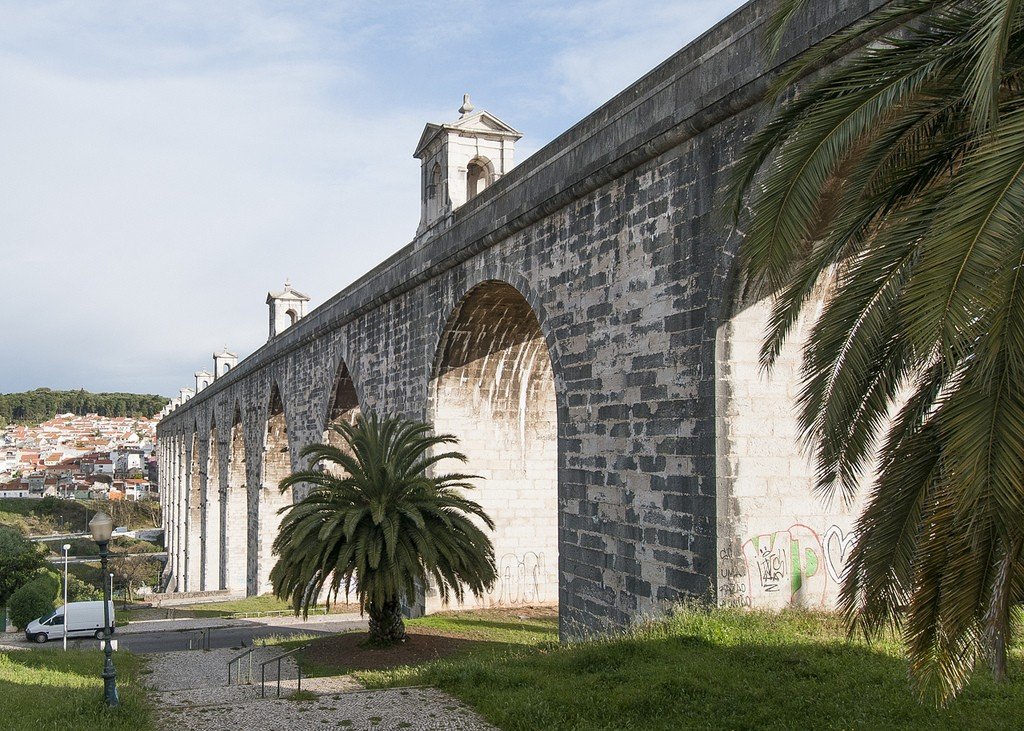Aqueduto das Aguas Livres
Aguas Livres Aqueduct (literally “aqueduct of free waters”) is considered one of the most interesting structures in Lisbon. This impressively sized engineering structure is part of the capital’s water supply system and crosses the Alcantara Valley in the northwestern part of the city.










General information
The aqueduct consists of 35 arches, of which 21 arches are semi-circular and 14 are lancet-shaped, the tallest of which is 62 meters high and 33.7 meters long. The aqueduct was not damaged during the Lisbon earthquake in 1755 thanks to its construction. The length of the aqueduct is 941 meters. It mostly runs underground and occasionally comes to the surface in the form of grandiose arcades.
.The aqueduct was built during the reign of Juan V, who was famous for his love of all things grandiose and majestic. The appearance of the aqueduct solved the problem of water shortage in the city, which was especially acute in the summer. Construction began in 1731 and the work lasted for decades. The construction was led by Portuguese engineer Manuel de Maia. The test of strength for the Aguas-Libris aqueduct was the earthquake, which in 1755 destroyed a significant part of the architectural structures of Lisbon. However, de Maya’s creation sustained little to no significant damage, continuing to distribute water to neighborhoods that had previously accumulated in the Mae Aguas reservoir.
.
Until the mid-19th century, the aqueduct was pedestrianized. But after the notorious murderer Diogo Alves weaponized it (robbing victims and throwing them down) and suicides became more frequent, the pedestrian passage was closed. Today, the aqueduct is only open to organized groups who arrange a tour in advance.
.The address is Calcada Quintinha, 6. For tourists, the entrance to the Aguas-Libris Aqueduct is organized through a garden called Jardim do Aqueduto.
.Opening hours: Monday – Saturday: 10:00 – 18:00.
.Entrance: 2.50 EUR.
.